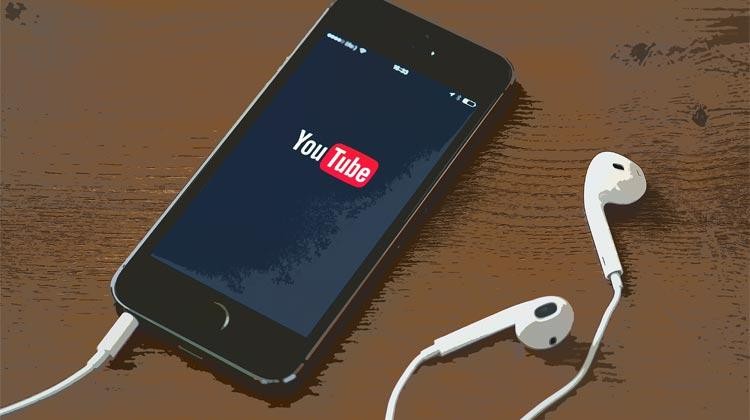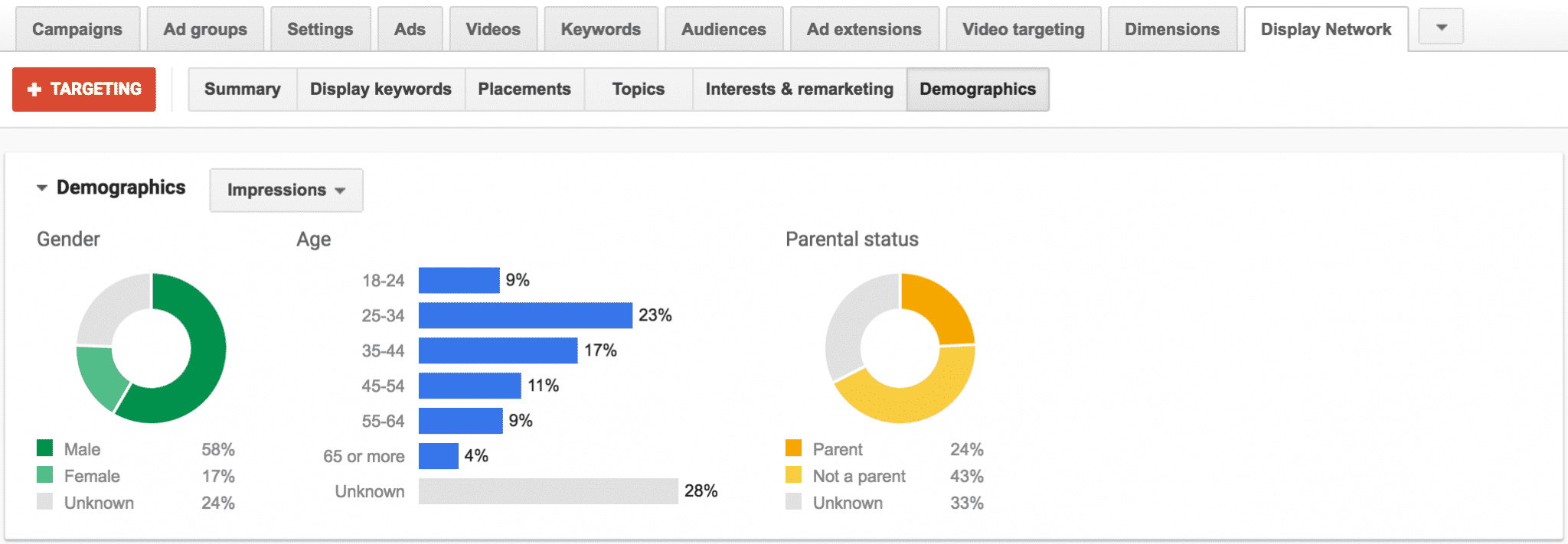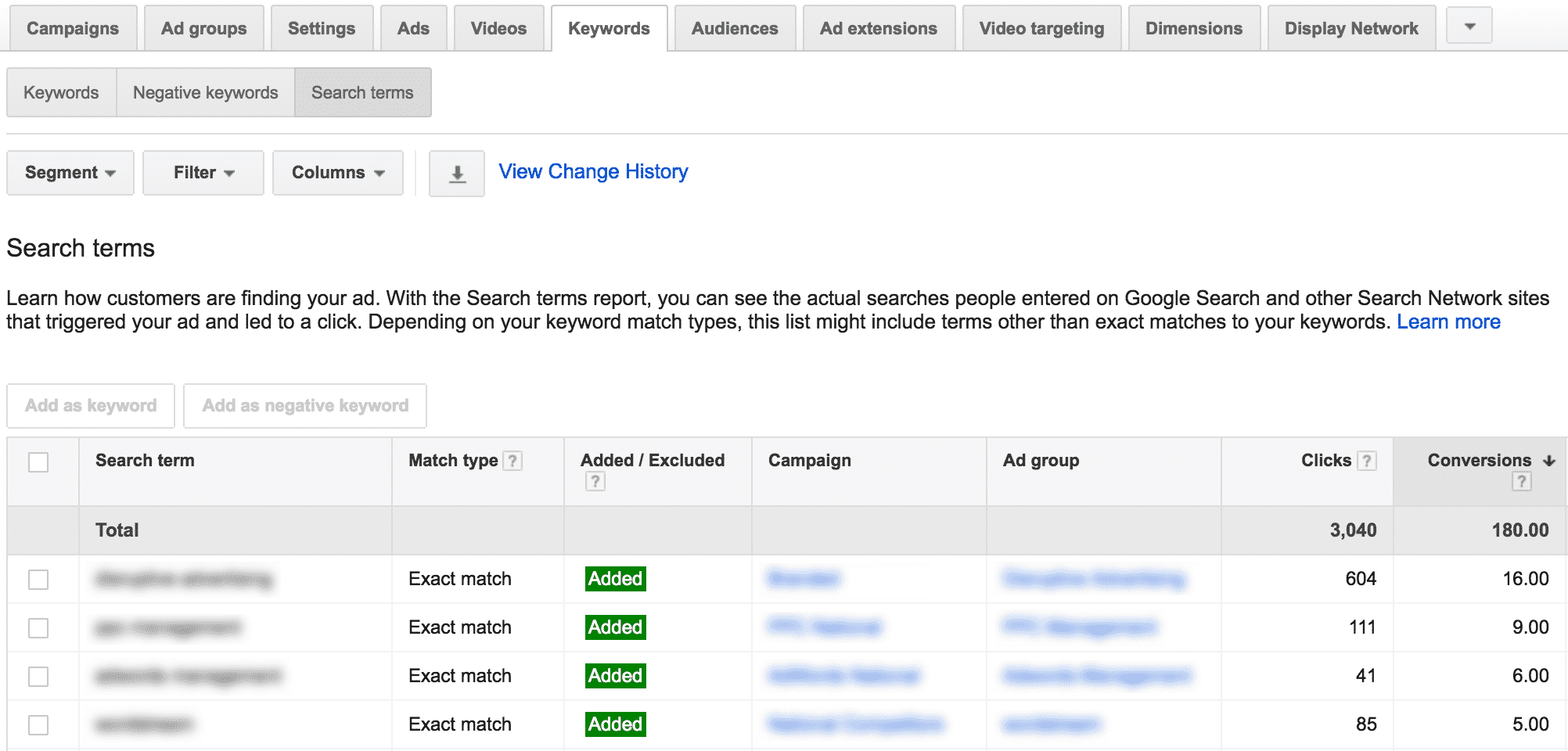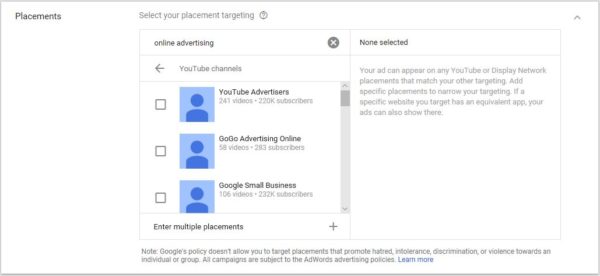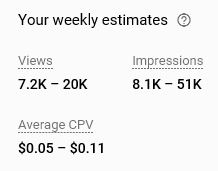YouTube Advertising: An In-Depth Guide to Advertising on YouTube
by Aden Andrus • February 27, 2018
Good video ad content is an integral part of modern marketing. However, without an excellent YouTube advertising strategy, you’ll struggle to get the results you want from your video campaigns.
While YouTube ads are run through Google AdWords, they are very different from standard paid search or display advertising. To make your YouTube ad campaigns successful, not only do you need to target the right audience and create killer video content, but also format and set up your videos correctly.
That’s precisely what you’ll learn in this guide. Keep reading to learn everything you need to know to start advertising on YouTube today.
Why YouTube Advertising?
Making great video content is more work than just about any other form of advertising. Why is YouTube advertising so exciting? The answer is simple: Video advertising on YouTube lets you access an affordable alternative to television ads.
TV ads have been the most effective form of advertising for decades. Unfortunately, a 30-second ad on a nationally-broadcast program can cost more than $100,000. That’s unattainable for all but the most prominent businesses.
YouTube changes all of that. The world watches more than 1 billion hours of YouTube videos daily. Furthermore, YouTube is much easier to access for small businesses. The average YouTube advertising cost is just pennies per view, and you only pay that if the viewer watches the entire ad — or 30 seconds, if the ad is longer.
YouTube ads work, too. According to Google, people who watch YouTube ads at least in part are 10 to 23 times more likely to take action like sharing or subscribing to a brand channel.
Combined with YouTube’s high-level targeting, the YouTube video ad format is one of the most powerful advertising platforms globally. It’s an accessible and affordable way to spread your video content to your target audience that’s shown to make a difference.
How YouTube Advertising Works
How do YouTube ads work? They’re different from any other platform. There are three methods for how to advertise on YouTube with videos: TrueView in-stream ads, TrueView video discovery ads, and bumper ads. There are also display ads, overlay ads, and sponsored cards on YouTube — but they aren’t proper video advertising.
Let’s look at how each of YouTube’s video ad types works.
TrueView In-Stream Ads
The most well-known form of YouTube advertising is TrueView in-stream ads. These are the ads that play before the video you want to watch. In most cases, viewers have to watch the ad for 5 seconds and then have the option to skip the rest of the ad or continue watching.
In TrueView in-stream ads, you can add clickable cards, calls-to-action (CTAs), or end screens that encourage viewers to do something specific — like click to your website. You can set these up directly in your video ad.
For example, you’ll see in the image below where Shutterstock’s clickable CTA shows up.
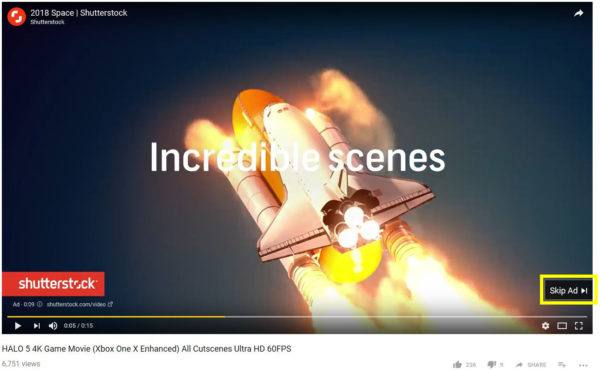
In addition to the classic skippable-at-five-seconds TrueView in-stream ads, you can also create non-skippable video ads that play before videos. These ads can also be run in the middle of videos as skippable in-stream ads at least 10 minutes long and cannot be longer than 15 seconds.
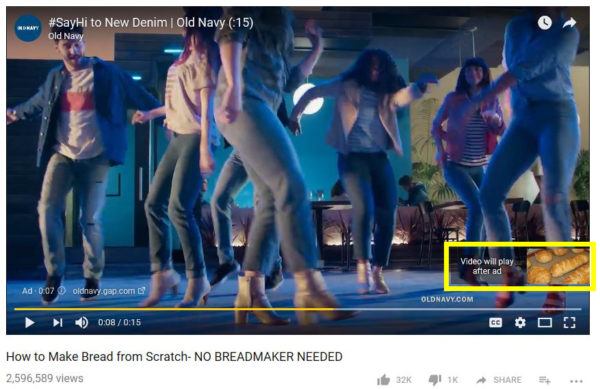
TrueView Video Discovery Ads — Previously Named In-Display Ads
Another form of video YouTube ad is the TrueView video discovery advertisement. These ads appear at the top of YouTube search results for your chosen keywords, as you can see in the example below.
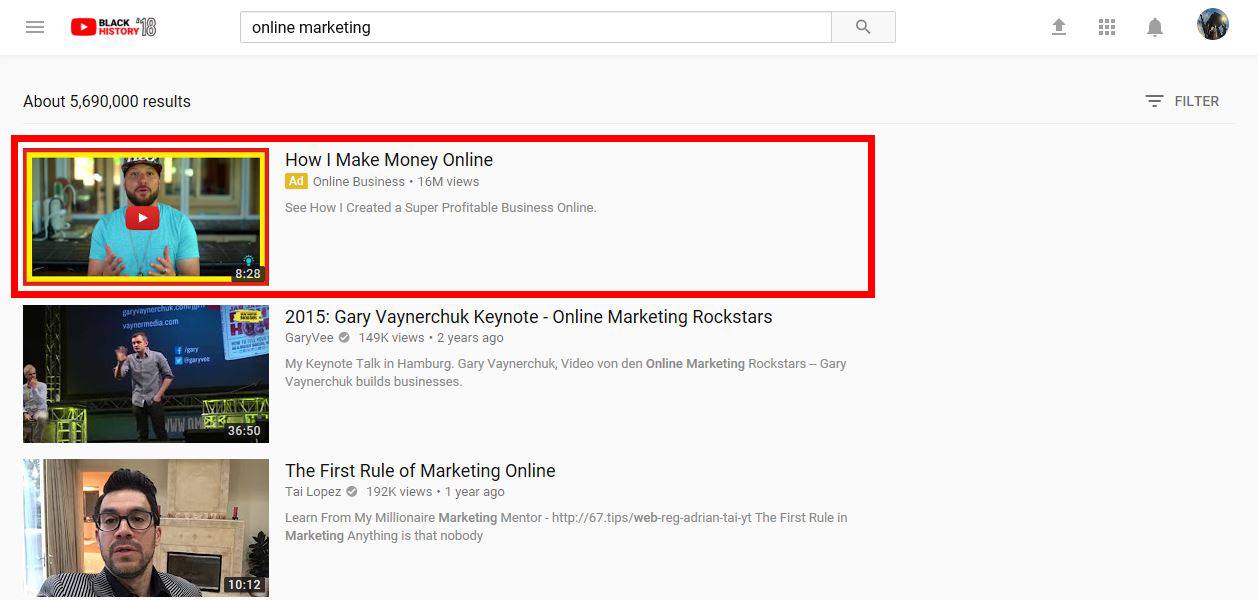
Google displays these results just like it places Google ads at the top of its search engine results pages. These ads also appear on the YouTube homepage and in the suggested video sidebar to the right of videos, as seen below.
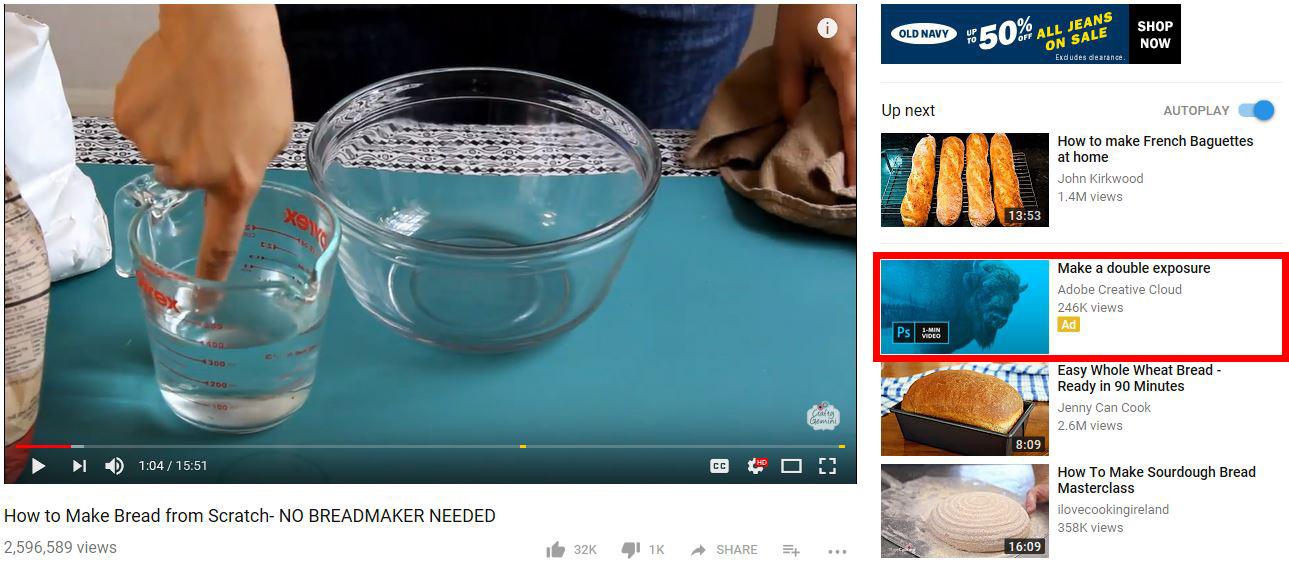
Video discovery ads are best if you’re promoting a video longer than a minute.
Bumper Ads
The opposite of a video discovery ad is the bumper ad. These are super-short videos of 6 seconds or fewer that can’t be skipped.
Bumper ads are less common because they’re so short. They’re primarily used to reinforce brand awareness since they’re too fast to communicate much and require you to pay the full YouTube advertising cost for every view. Still, a bumper ad can play an essential role in retargeting and follow-up campaigns.
For example, Disruptive Advertising used a video to compare picking an advertising agency with dating. Using YouTube’s excellent targeting tools, Disruptive followed up with a retargeting campaign that paired five-second romantic shots of the couple featured in our video with the words “This could be us.” Since anyone who saw the bumper ads had seen the original video, this was a great way to reinforce the message of the original video without becoming repetitive.
Bumper ads work best with this follow-up approach. They’re a great way to remind people about your brand and campaigns without risking frustration.
How To Create a YouTube Video Advertising Campaign
There’s not enough room in this guide to cover video creation on top of YouTube targeting. You can learn how to create dynamite video content by reading this article and this article. Below, you’ll learn how to use the exciting ads you’ve already made to power a YouTube advertising campaign with AdWords’ impressive features.
Upload Your Video to YouTube
The first step for developing a YouTube ad campaign is uploading your ad to the platform. If you don’t already have a YouTube channel, learn how to set one up in this guide.
Once you’ve logged into your YouTube channel, click on your profile icon in the upper right-hand corner and click “Creator Studio.”
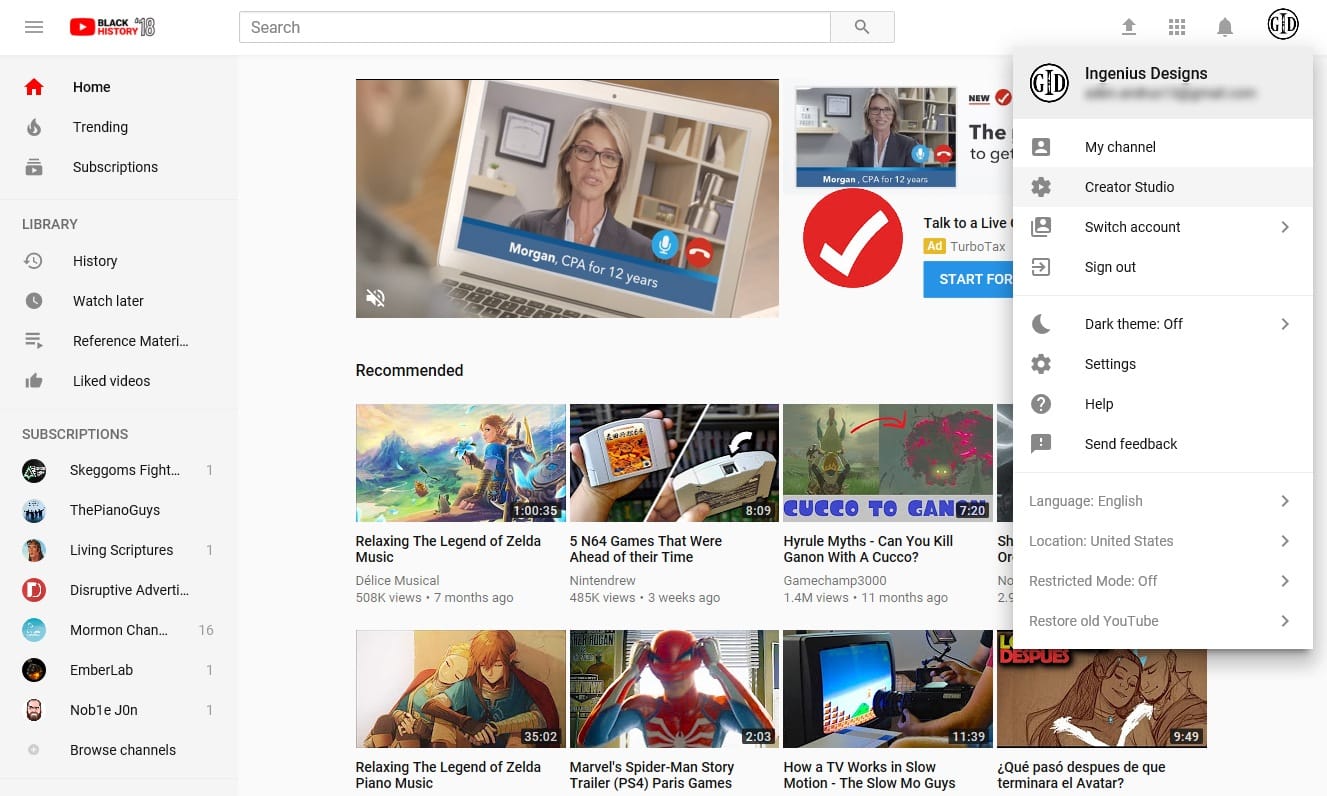
From there, click on the upload icon in the upper-right hand corner and then upload your video to YouTube.
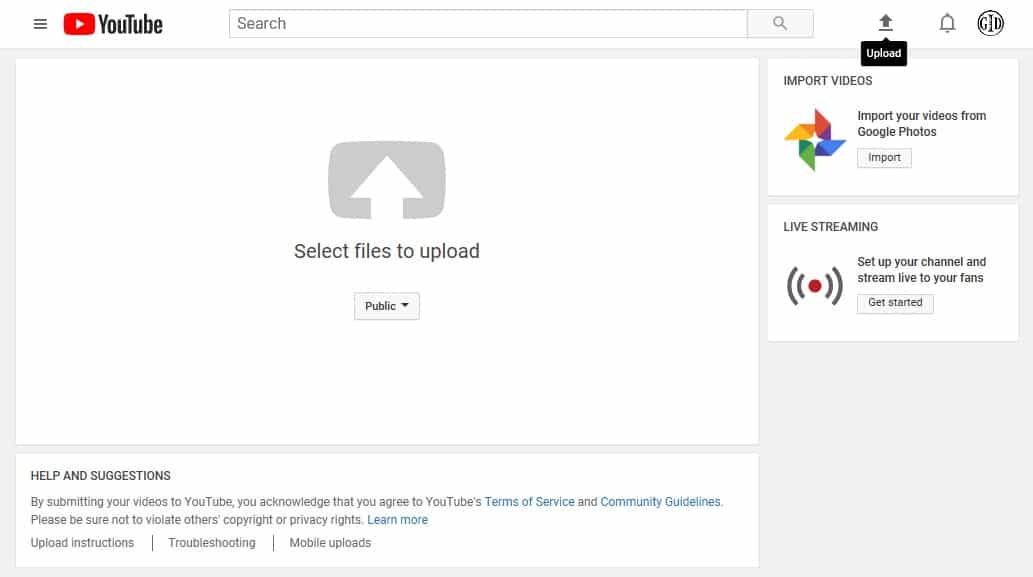
Create Your Campaign
As soon as you have a URL for your video, you can head to your Google AdWords account and start creating your new video campaign.
Log into your AdWords account, click on the “campaigns” tab, click the blue “+” button, and click “new campaign.” You’ll be presented with several types of campaigns to choose from.

Choose “video” and select your goal for the campaign. You can choose brand awareness or conversions. For this guide, we’ve chosen “brand awareness and reach.”
Campaign Settings
The next page is where your options expand. First, you’ll need to choose your campaign settings.
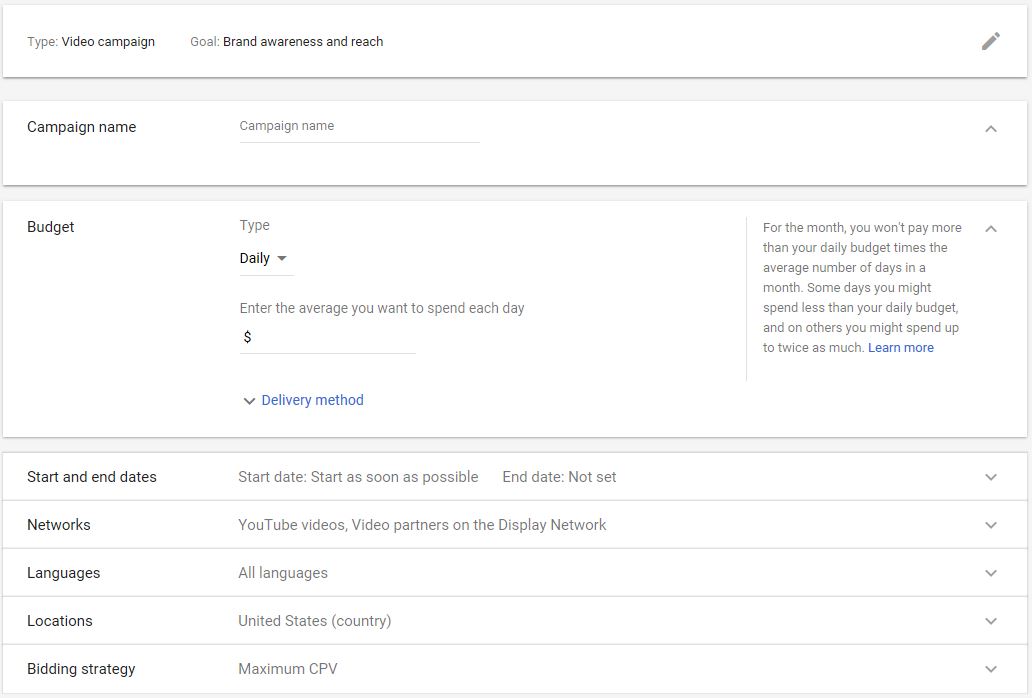
The first few options are simple. Name the campaign something you’ll remember, then set your budget. This article offers advice on selecting an advertising budget to make the most of your AdWords or YouTube ads cost. You’ll also choose the language of your content and start and end dates for the campaign.
The next choice is more complex. Narrow down the locations in which your preferred leads live. You can use the search bar under “locations” to set your selected geo-targeting locations unless you genuinely want to target the entire United States. You can both include and exclude areas, so you could target all of Florida except for Tampa if you wanted to.
If your ad is based around a time of day, you can also click through to “advanced options” and set your dayparting features and settings to ensure that your ads are only seen during certain times. You can also fine-tune your bidding strategy or restrict your video to YouTube, but these settings can typically be left alone
Ad Group Settings
The following section is “ad groups,” or the targeting you want for your videos. This section will determine how YouTube chooses who to show your ads to, so take your time and be specific.
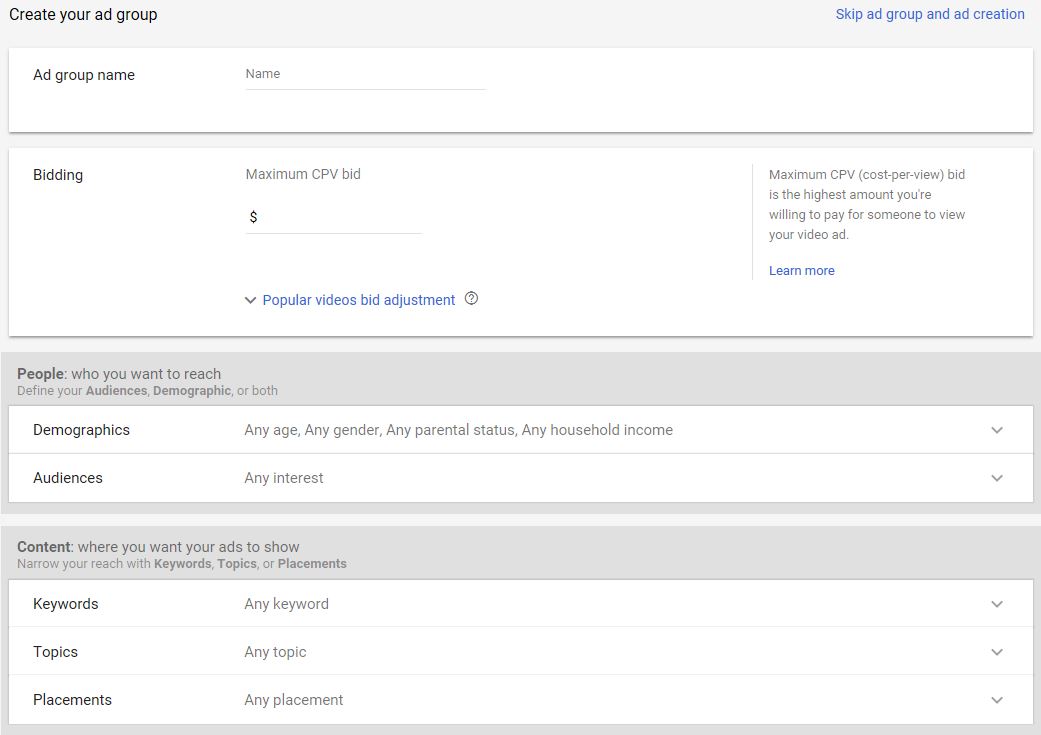
Picking a name and a maximum bid is straightforward, but things get a bit more complicated as you choose who you want to target with your ads.
The audience you choose here will have a considerable influence on the success or failure of your YouTube advertising, so let’s take a closer look at each targeting option.
Demographics
The most basic form of YouTube grouping and targeting is demographic data. You can use Google Analytics to see your core customer base and determine who your target demographics should be.
Open Google Analytics, click on “audience,” expand the Demographics submenu and then click on “overview.” Then, change your segment to “converters.”
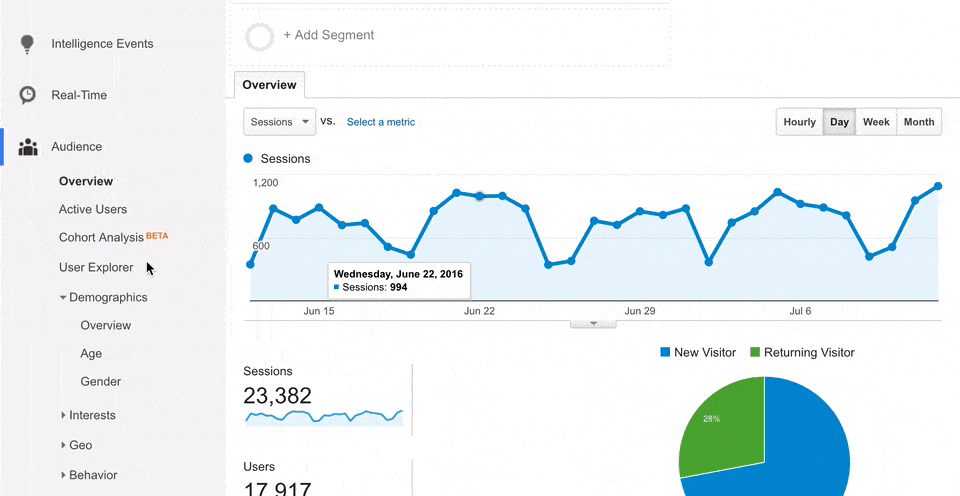
Using this report, you can easily see which age and gender demographic you should be targeting with your display ads.
You can also learn more about your target audience using the AdWords Report Editor.
Once you’ve got this data in hand, it’s time to take a look at your display advertising demographic data. Open AdWords, click on the appropriate campaign and click on Display Network. Click Demographics.
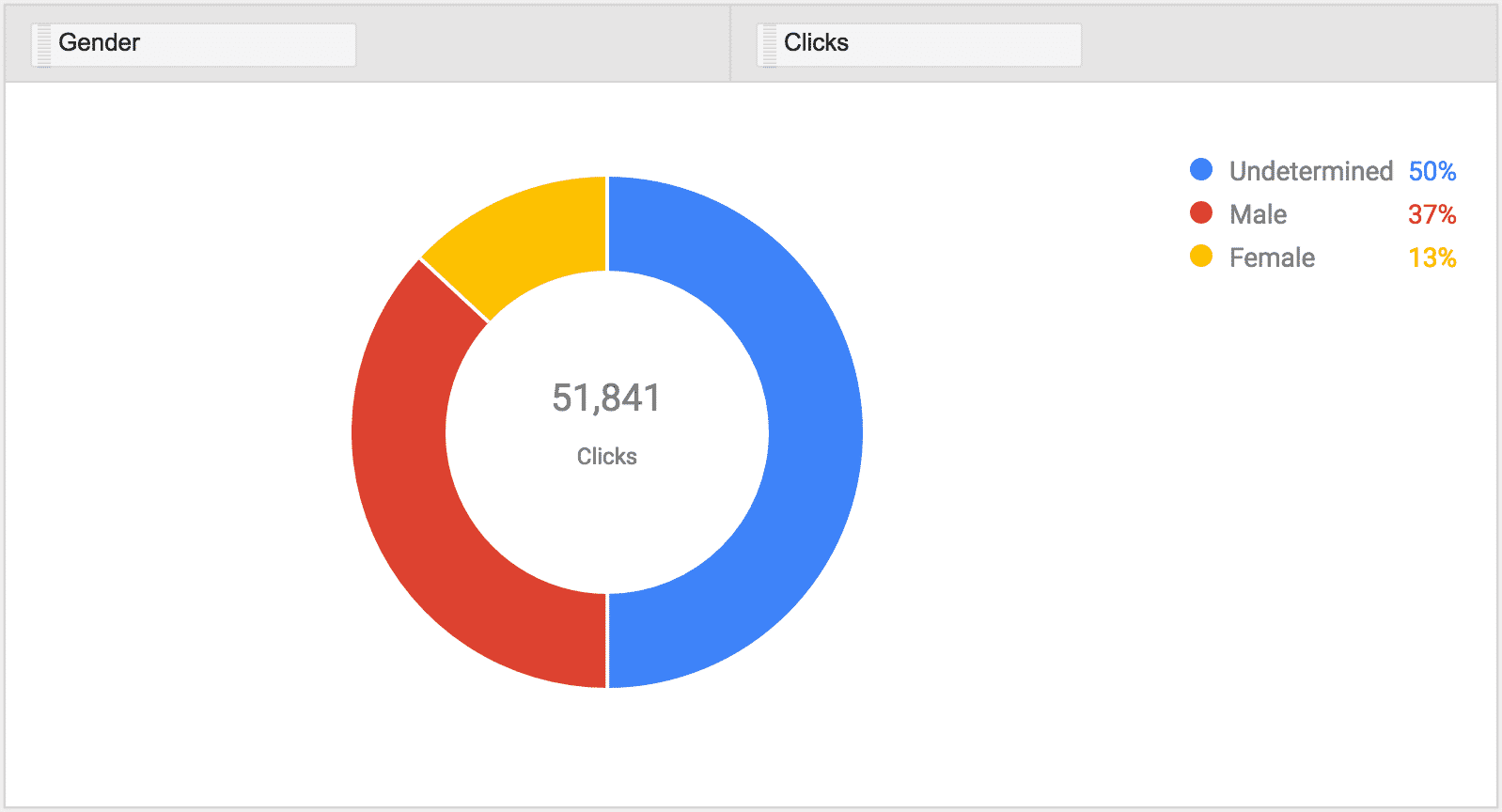
In this report, AdWords shows you the age, gender, and parental status of the people who see, click on and convert from your ads. It’s generally a good idea to match the demographics targeting of your YouTube advertising ad groups to the demographics that are visiting your website and converting from your ads.
Getting your demographic targeting right can significantly affect the results you get from your video ad.
Audiences
In this section, you can choose from three different types of “audiences” that Google generates based on their online behavior.
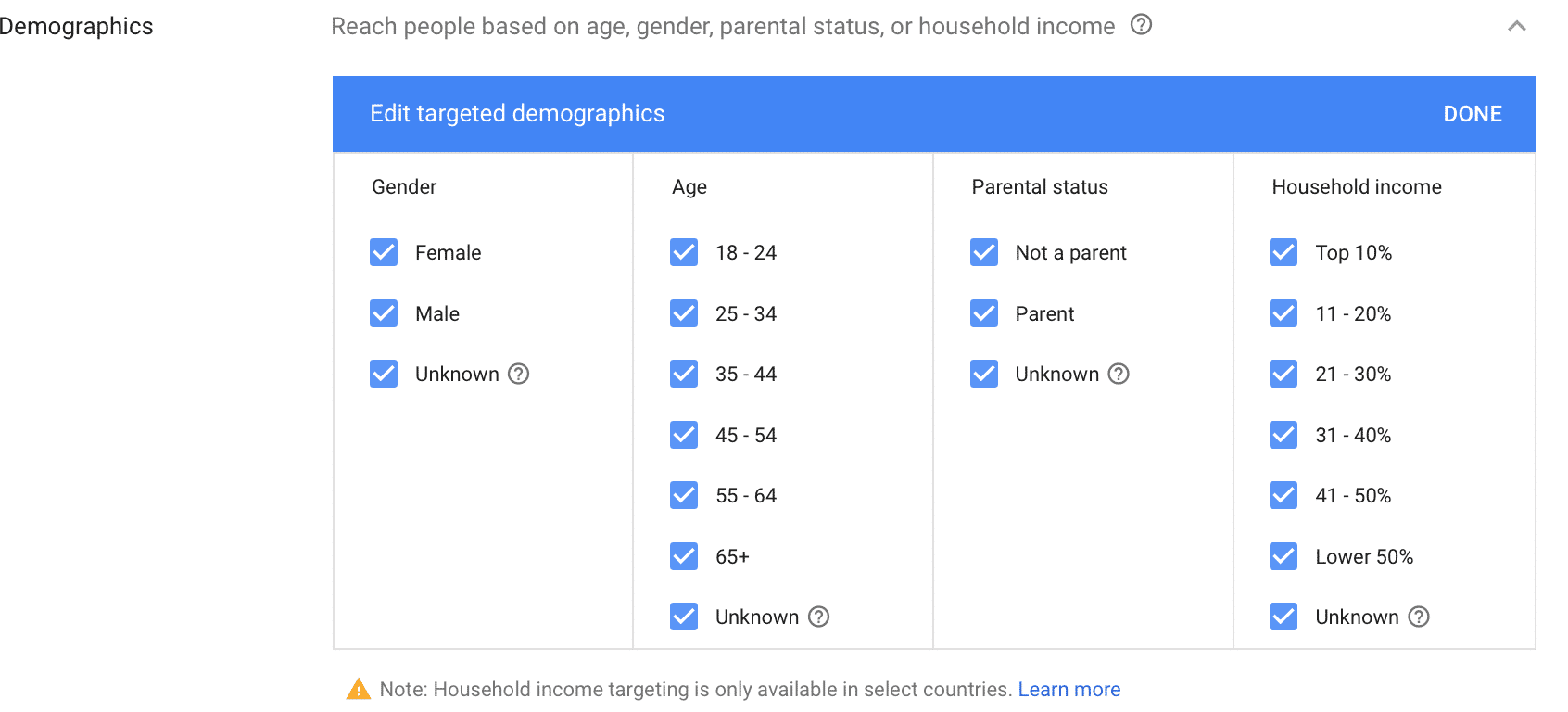
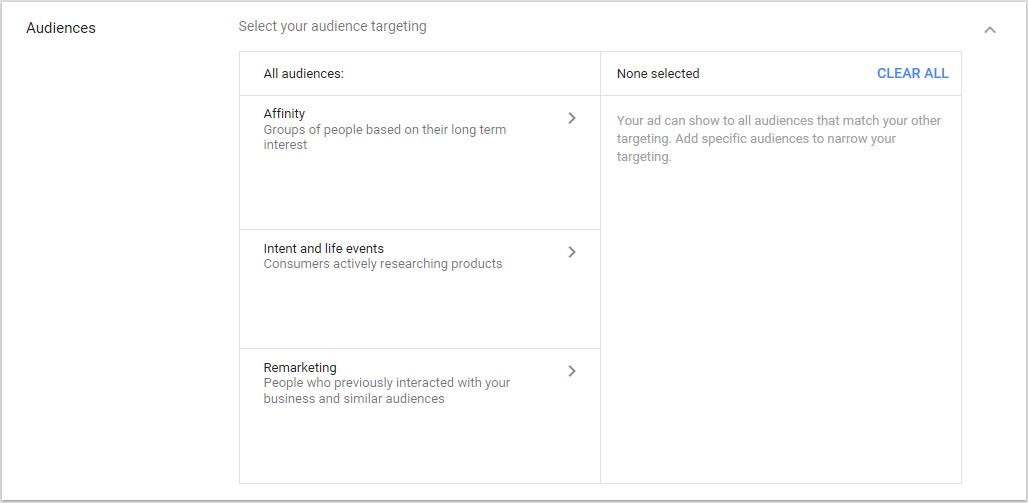
These three audiences are determined based on how audiences may engage with your content. Here’s how you can put each of these categories to work for you.
Affinity
Google’s position as the premier search engine means that the company knows a lot about everyone. About 67.5% of search queries happen on Google. In addition, Google keeps track of the searches you make, the sites you visit, and even the actions you take on those sites. Using this data, Google puts us into “buckets” based on what it thinks our interests are. These “buckets” are called affinity audiences.
Custom Affinity Audiences makes this even more precise. With Custom Affinity Audiences, you can choose exactly who you want to reach using customer interests and even URLs they’ve visited.
For instance, if you have a competitor that is the name in your industry, you can create a Custom Affinity Audience targeting people that visit that site. There’s an excellent chance that your display ads will then be shown to a relevant, ready-to-buy audience.
Intent and Life Events
The next type of audience is in-market users. These are people within specific verticals that are exhibiting “buying behaviors.” They may be clicking on ads, visiting landing pages, performing searches with the word “buy,” and more. You can use this audience to target users ready to buy, giving you a much better chance of winning a click and potentially a sale.
In-market audiences have shown proven results, too. Wayfair and Toll Brothers have seen 20% improvements in ad response rates and 50% lower acquisition costs. When combined with remarketing, below, in-market audience targeting tripled these company’s click-through rates.
Remarketing
Perhaps the most influential audience is remarketing. This audience is specifically built from the people who have previously engaged with your brand but didn’t convert.
Usually, when someone reaches your site and doesn’t convert, that’s the end of the story. They leave and don’t come back. Remarketing changes that.
Remarketing lets you target users who’ve engaged with your brand and remind them about your offerings. You can use it to keep your brand in front of people who were definitely interested in your products, bring them back to your site, and encourage them to convert.
Keywords
The next targeting section is keywords. Google is the king of keyword targeting, and on YouTube, you can specifically target potential customers based on their Google searches.
Of course, this requires that you target the right keywords. You can quickly figure out the words and phrases people use when they’re interested in your product or offer if you’re also running paid search ads.
Open AdWords, set your time window to 6-12 weeks, and click on the Keywords tab. Next, click on “search terms.”
Look at impressions, clicks, and conversions to identify the search queries that produce your best traffic. You’ll probably have one or more groups of similar, high-producing search terms that you can use to build your keyword lists.
Take these keywords and enter them into your YouTube keyword targeting. It may take a month or two for YouTube to index them. Check back in six to eight weeks to see which keywords work best and which need to be replaced.
Topics
The targeting options above focus on using Google’s knowledge of its audience to decide where to display ads. This tool, however, lets you use your knowledge. You can use Topics to choose the types of channels on which you want your ads to be displayed, and Google will do its best to show videos on channels related to that topic.
Google doesn’t always identify channel topics accurately, so this is sometimes an unpredictable targeting method. You can select topics, but it’s best to rely on other targeting options to avoid paying the YouTube ads cost for views to users who don’t care about your offering.
Placements
This tool is the hyper-specific alternative to Topics. With Placements, you choose specific YouTube channels that you believe your best leads will be watching. Then YouTube will prioritize showing your ads on these channels.
If you’re confident in the channels you want to target, this is a great way to put your ads in front of specific people. Just make sure that your target audience actually watches these channels, or you won’t get the relevant views you want.
No matter how you complete the “ad group” section, keep an eye on the “your weekly estimates” calculator in the upper right-hand corner of your screen.
Once you’ve entered your budget, bids, targeting, and video URL, this number will update as you change your settings. This allows you to get a sense of how big your potential audience is. It will also give you a clear idea of the YouTube advertising cost for your proposed audience.
Creating the Video Ad Creative
The last step of how to advertise on YouTube is determining where you want a click on your ad to send people. You’ll enter a destination URL for the ad and a display URL that Google will show with your ad.
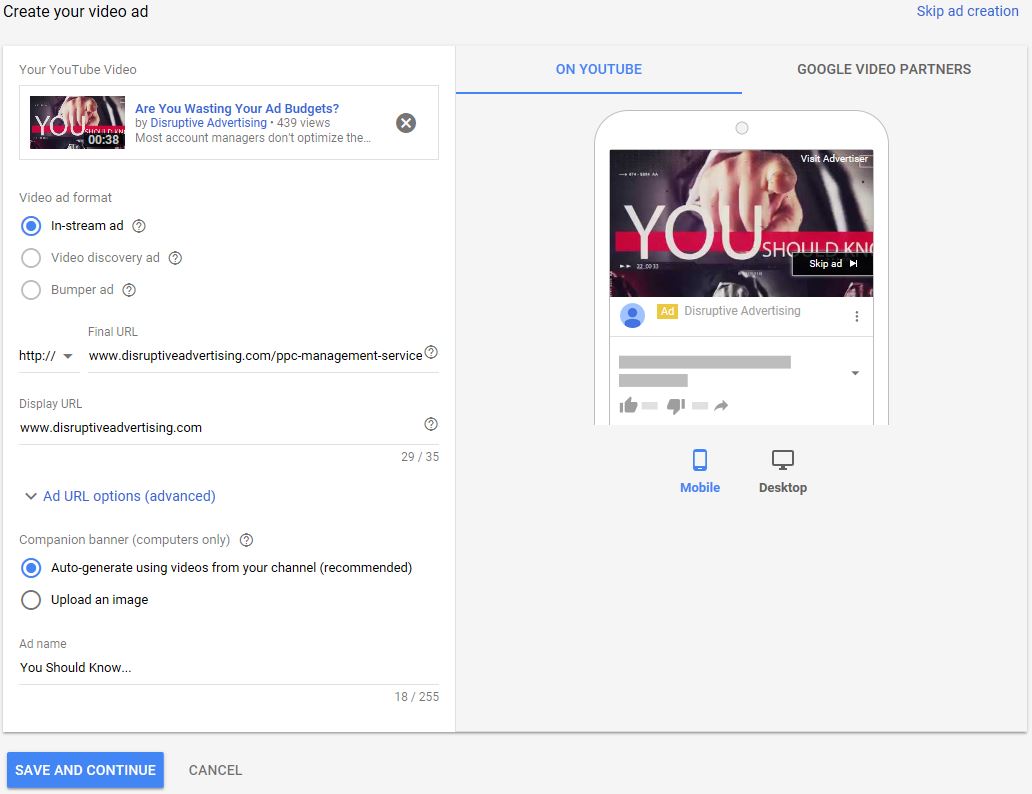
You can also set up a custom thumbnail to display in the companion image for the ad by uploading a 300-by-60-pixel picture. Otherwise, you can let AdWords pick a thumbnail for you.
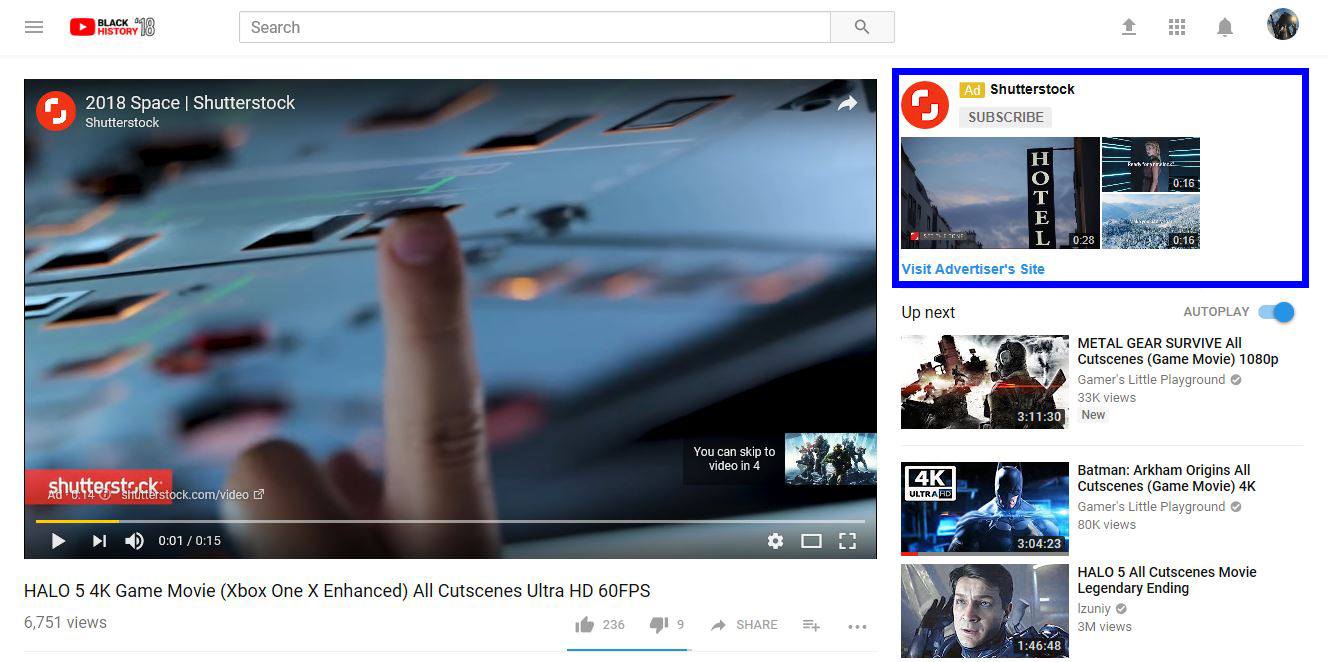
Last but not least, pick a name for the ad and click “save and continue.” Your campaign will be up and running as soon as Google approves it.
Making the Most of YouTube Advertising
YouTube advertising isn’t a “set it and forget it” type of marketing. Once you’ve set up your advertising campaign, you should start getting clicks and conversions within a day. However, you’ll need to stay on top of your campaign to make sure it continues making an impact.
Too many marketers fail to optimize their YouTube advertising campaigns regularly. Only 10% of YouTube ads are optimized even once a week. Based on Disruptive Advertising’s experience, 72% of accounts are touched less than once a month.
That brings up the question of how often to optimize your account. That depends on your traffic and budget.
If your budget is more than $10,000/month, you should review your campaigns at least once a week. However, it’s best to check every other day to avoid wasting money. If you’re releasing a new campaign, you should be checking your account three times a day: morning, noon, and evening.
On smaller budgets, you probably aren’t generating enough data for daily checkups. Still, it’s best to keep an eye on your performance with weekly reviews. In general, the more time you invest in your YouTube campaigns, the better they will perform.
Optimize Your YouTube Advertisements Today
YouTube ads are one of the most effective ways of getting engaging video content in front of a targeted, engaged audience. While video ads take more work, they’re also one of the best ways to build brand awareness and encourage conversions.
Still, you need to make sure people see your videos to make an impact. There’s no one right method for how to advertise on YouTube. You can make your video ad campaigns successful by fine-tuning your advertising campaign settings.
If all of these settings are a little overwhelming, you don’t have to manage advertising on YouTube by yourself. You can get in touch with Disruptive Advertising to discuss your campaign and get the help you need to make truly effective YouTube campaigns.

